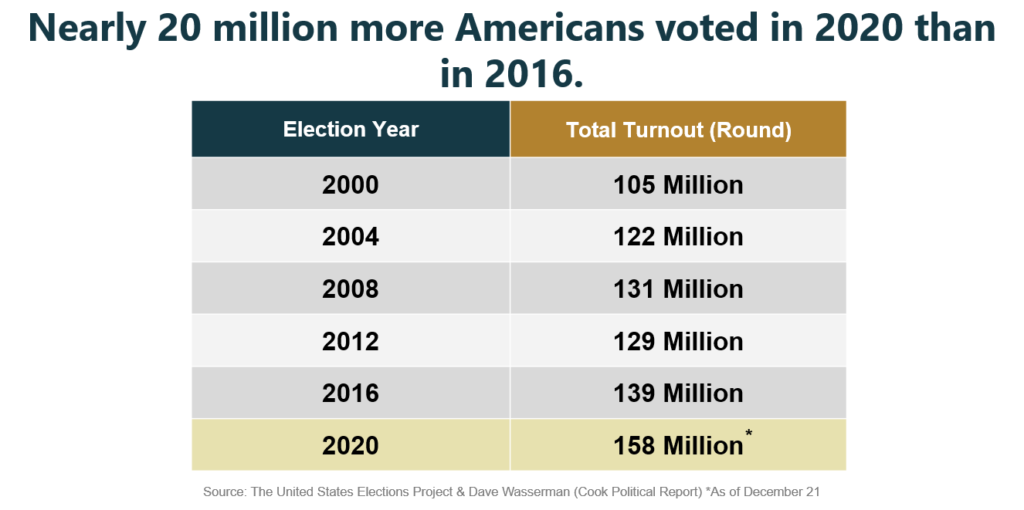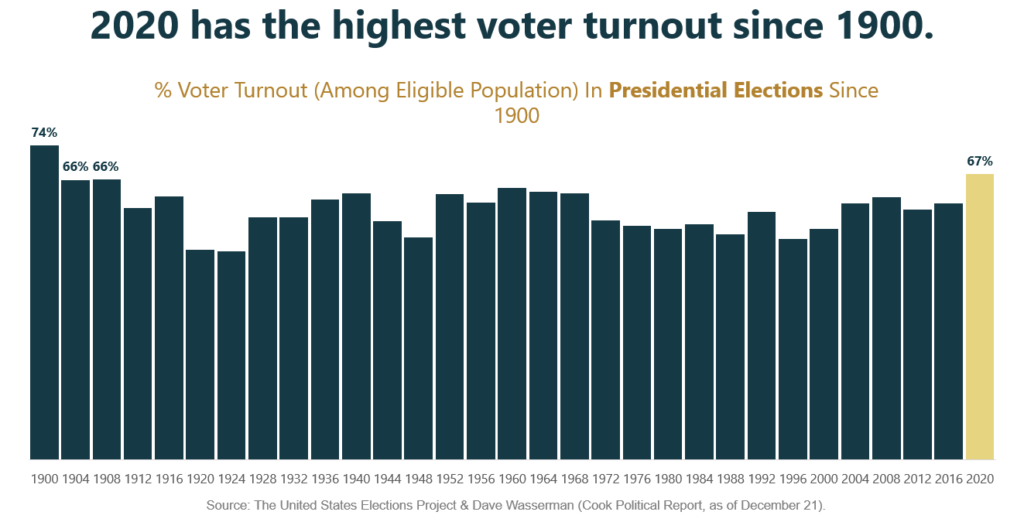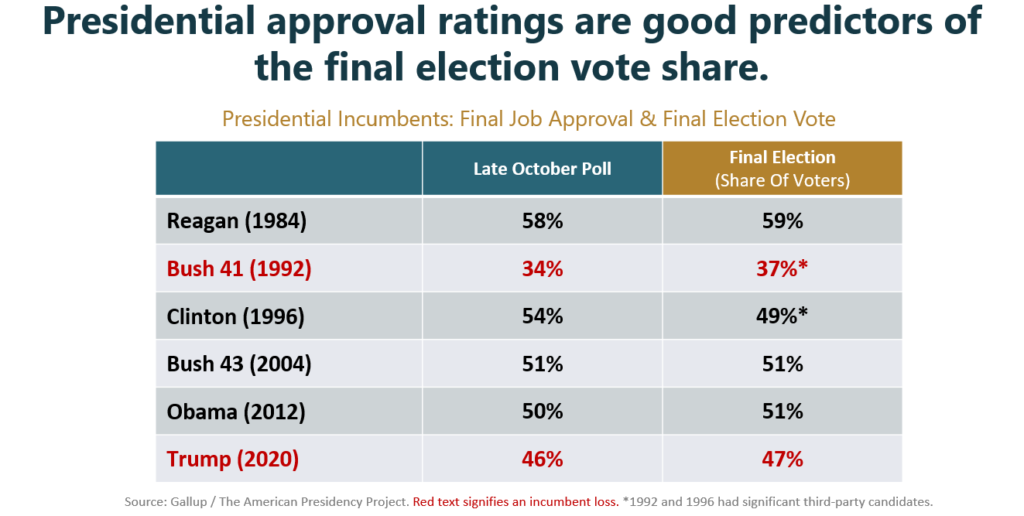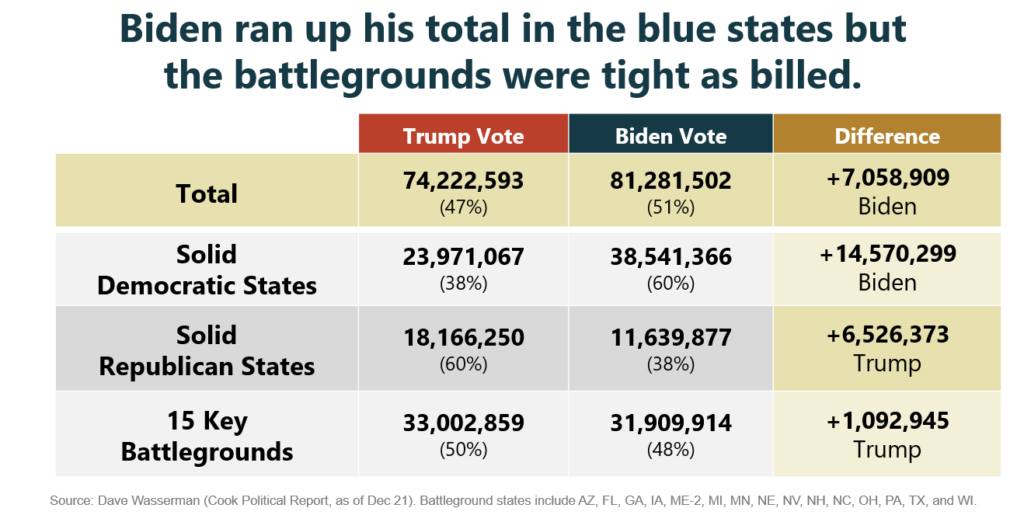featured insight
featured insight

2020 Presidential Election Retrospective: Election Day
Meeting Street Insights combines behavioral data points with polling data to get a clearer picture of the 2020 Presidential election.
As more data becomes available, we’re able to get a better idea of the ways the 2020 election resembled past elections. In this post, we’ll look at data including turnout, presidential approval ratings, battleground state totals, and electoral votes.
For a look at some of the data leading up to the election — including voter priorities and election interest — check out Part I of our 2020 Presidential Election Retrospective.
More Americans Voted in 2020 than 2016
Even accounting for population growth, the 2020 election had historic voter turnout. More than 158 million people voted in 2020, nearly 20 million more than voted in 2016.

And this unprecedented voter activity wasn’t just seen in the raw numbers. About two-thirds of Americans who were eligible to vote turned out in 2020 — the highest percentage of the voting-eligible population to turn out since 1900.

Approval Rating Continues to be a Good Predictor of Vote Share
Incumbent presidents’ late-October job approval ratings have historically been very close to their final vote shares (1992 and 1996 had a significant third-party candidate, which may explain some of the divergence there). This pattern held with Trump as well. His job approval rating in late October was 46%; he received about 47% of the final vote share.

Voting In Battleground States Was Tight
Turnout was incredibly strong in the 15 battleground states, and the candidates were close there (as expected), with Trump losing some ground from 2016. Collectively, the vote difference between Biden and Trump was about 1.1 million votes (around 2% of the vote total) in the battleground states.

Biden Received the Same Number of Electoral Votes in 2020 that Trump did in 2016
Although the distribution of states changed, Biden received 306 electoral votes, the same number of electoral votes in 2020 as Trump did in 2016.

The 2020 Presidential election was extraordinary in certain aspects, most notably turnout. However, preliminary data is showing that in many ways the results are in line with historical precedent. As states begin to update their voter files and more data becomes available, we’ll be diving deeper to get as full a picture of this election as we can.
What do you need to know? We can help. Get in touch or subscribe to our newsletter.

